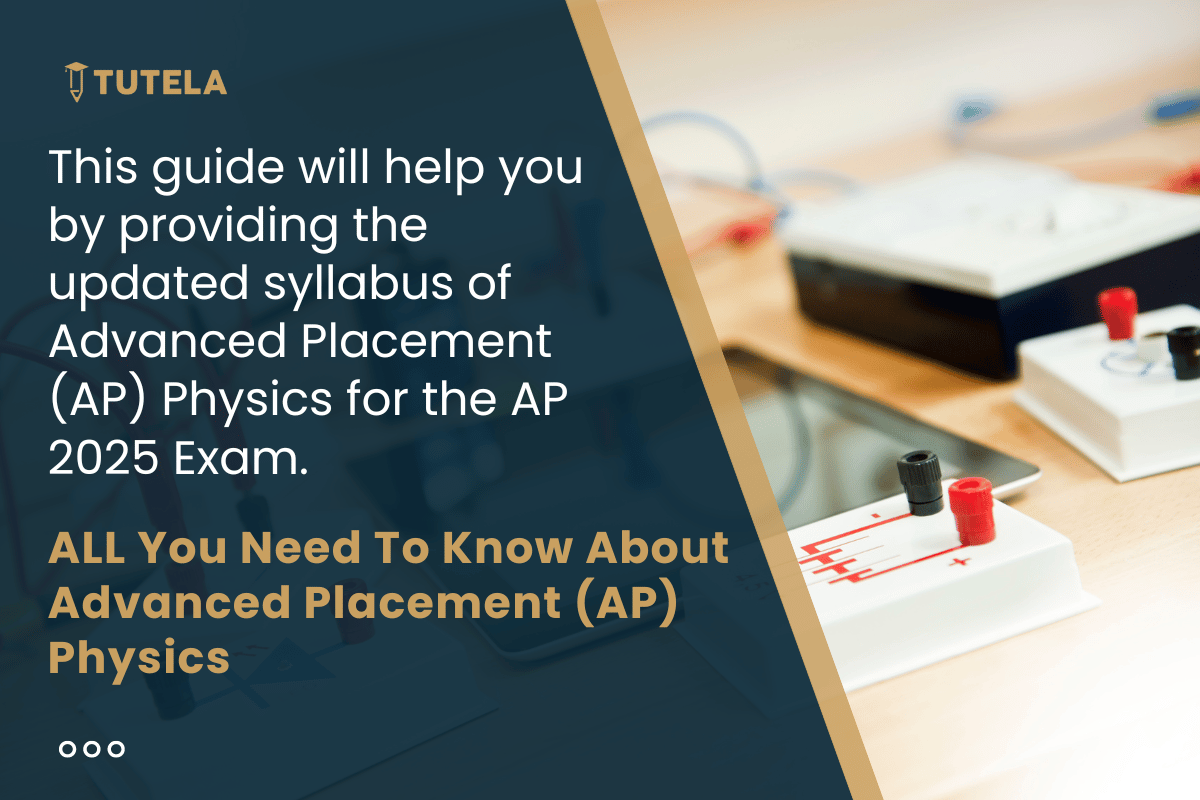
Physics is an exciting subject that helps us understand the natural world, from the tiniest particles to the vast universe. For high school students who want to explore this field deeply, Advanced Placement (AP) courses are a great opportunity. The College Board offers four different AP Physics courses, each designed to cater to various interests and academic levels. In this blog, we will provide a brief overview of these four AP Physics courses. All the AP Physics courses for the May 2025 Exam have undergone some changes. We have incorporated these changes below.
The table below will provide a comprehensive overview of each of these courses, helping you understand their prerequisites, what you can expect to learn, and the structure of the exam.
| AP Physics Exam | Units Covered | Prerequisite | Exam Structure |
| AP Physics-1 |
|
| Section I: Multiple-Choice Questions (MCQs)
Section II: Free-Response Questions (FRQs)
|
| AP Physics-2 |
|
| Section I: Multiple-Choice Questions (MCQs)
Section II: Free-Response Questions (FRQs)
|
| AP Physics C: Mechanics |
|
| Section I: Multiple-Choice Questions (MCQs)
Section II: Free-Response Questions (FRQs)
|
| AP Physics C: Electricity and Magnetism |
|
| Section I: Multiple-Choice Questions (MCQs)
Section II: Free-Response Questions (FRQs)
|
Selecting the right AP Physics course can be a crucial decision in your high school journey, especially if your school offers limited options. Here are some situations and the best options for each:
| Situation | Options |
| 1. Strong in Math and Science | Opt for AP Physics C (Mechanics or Electricity and Magnetism) to match the advanced level of math and science skills. |
| 2. Limited Math Background | Choose AP Physics 1 or AP Physics 2, as these courses require less advanced math. |
| 3. Planning for Engineering or Physics Major | Take AP Physics C, which aligns better with college-level coursework in these fields. |
| 4. Non-STEM Major | AP Physics 1 or 2 might be sufficient and more appropriate. |
| 5. Concerned About Workload | Assess your current and anticipated workload to ensure you can handle the course rigor. |
By providing a clear understanding of these courses, students can make informed decisions about which AP Physics course aligns best with their academic goals and interests. Each course offers a unique perspective on the principles of physics, preparing students for further studies in science and engineering.
1. What are the prerequisites for AP Physics courses?
Ans: AP Physics 1 typically requires completion of geometry and concurrent enrollment in Algebra II or an equivalent course. AP Physics 2 requires completion of AP Physics 1 or a comparable introductory physics course and concurrent enrollment in pre-calculus or an equivalent course. AP Physics C courses require a strong foundation in calculus, typically concurrent enrollment or prior completion of calculus courses.
2. How do the changes in the AP Physics exams affect students?
Ans: The changes in the AP Physics exams for May 2025 include adjustments in the number and format of both multiple-choice and free-response questions. Understanding these changes can help students better prepare for the exams and manage their study time effectively.
3. Which AP Physics course is best for students interested in life sciences or pre-med studies?
Ans: Students planning to study life sciences, geology, or pre-med may benefit most from taking AP Physics 1 followed by AP Physics 2. These courses cover a broad range of foundational physics principles applicable to these fields.
4. Is it possible to take both AP Physics C courses (Mechanics and Electricity/Magnetism)?
Ans: Yes, students with a strong interest and capability in physics and calculus can take both AP Physics C courses. This option is particularly suitable for students aiming for rigorous preparation in physics and planning to major in engineering or physical sciences.
5. How should students decide between AP Physics 1 and AP Physics 2 if both are available at their school?
Ans: Students should consider their mathematical preparation and interest in specific topics. AP Physics 1 is introductory and requires less advanced math, while AP Physics 2 covers more diverse topics and requires pre-calculus. Choosing based on academic strengths and future goals is crucial.
TutelaPrep’s College Navigator allows students to search for colleges based on their preferred country and course. Not only that, it also provides valuable insights into each college’s specific admission requirements for those exams. Through College Navigator, you can even connect with alumni at your chosen colleges to get a firsthand feel for campus life and academics.
We hope this article helped you with the subject knowledge. Reach out to us by filling out our assistance form if you need any help with the preparations.